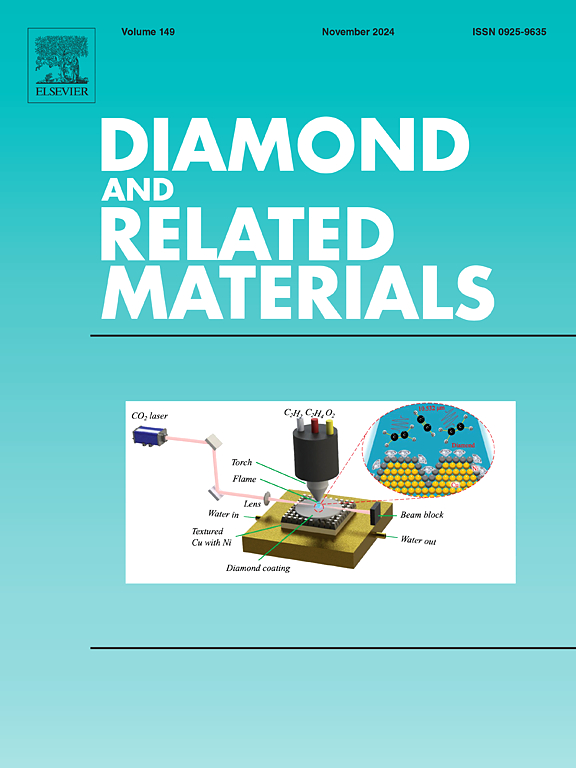豆粕纤维衍生活性炭H₃PO₄辅助热解去除磺胺甲恶唑:Box-Behnken设计优化及机理研究
IF 4.3
3区 材料科学
Q2 MATERIALS SCIENCE, COATINGS & FILMS
引用次数: 0
摘要
磺胺甲恶唑(SMX)等药物污染物在水体中的广泛存在已成为一个日益紧迫的环境问题,这主要是由于它们的持久性和对人类和生态健康的潜在风险。传统的水处理技术往往无法有效地去除这些污染物,因此需要创新的、可持续的解决方案。在这项研究中,我们探索了一种环保型中孔活性炭的使用,该活性炭来源于杜姆纤维废物(Chamaerops humilis),用于有效去除水环境中的SMX。该材料经磷酸(H3PO4)化学活化和热解制备,得到高比表面积768 m2/g的多孔吸附剂。原料豆纤维的表征表明,它富含木质纤维素成分,纤维素、半纤维素和木质素的含量分别为31%、25%和17.8%。利用FTIR、XRD、SEM、TGA和BET等技术对合成碳的结构和表面特征进行了全面的研究。为了系统优化吸附条件,我们采用响应面法(RSM)结合Box-Behnken设计(BBD),考察了吸附剂剂量(5-35 mg)、SMX浓度(5-45 mg/L)、溶液pH(2−12)和接触时间(10-120 min)四个关键因素对吸附条件的影响。此外,通过密度泛函理论(DFT)计算在分子水平上研究了SMX分子与活性炭表面的相互作用机理,为SMX分子与活性炭表面的相互作用提供了详细的见解。实验结果表明,吸附符合Langmuir等温线模型,为单层吸附,最大吸附量为77.02 mg/g。动力学数据最符合伪二阶模型(R2 = 0.99, χ2 = 0.22),表明化学吸附是限速步骤。热力学参数证实该过程为自发放热过程。在最佳条件下(吸附剂25 mg、SMX 29 mg/L、pH 9、接触时间107 min), SMX去除率达96.12%。吸附主要由静电吸引、π -π相互作用、氢键和孔隙填充机制控制,在酸性到中性pH水平下特别有效。据我们所知,这项工作首次证明了磷酸活化的杜姆纤维碳去除SMX的潜力,突出了它作为一种可持续的、高效的水净化材料的前景。本文章由计算机程序翻译,如有差异,请以英文原文为准。
Doum fiber-derived activated carbon via H₃PO₄-assisted pyrolysis for sulfamethoxazole removal: Box-Behnken Design optimization and mechanistic approach
The widespread presence of pharmaceutical pollutants such as sulfamethoxazole (SMX) in water bodies has become an increasingly pressing environmental issue, largely due to their persistence and potential risks to human and ecological health. Traditional water treatment technologies often fall short in removing these contaminants efficiently, underscoring the need for innovative, sustainable solutions. In this study, we explore the use of an eco-friendly mesoporous activated carbon derived from Doum fiber waste (Chamaerops humilis) for the effective removal of SMX from aqueous environments. The material was produced through chemical activation using phosphoric acid (H3PO4) and pyrolysis, resulting in a porous adsorbent with a high surface area of 768 m2/g. Characterization of the raw Doum fiber revealed it to be rich in lignocellulosic components, with cellulose, hemicellulose, and lignin contents of 31 wt%, 25 wt%, and 17.8 wt%, respectively. The structural and surface features of the synthesized carbon were thoroughly examined using techniques such as FTIR, XRD, SEM, TGA, and BET analysis. To systematically optimize the adsorption conditions, we employed Response Surface Methodology (RSM) coupled with Box-Behnken Design (BBD), investigating the effects of four key factors: adsorbent dose (5–35 mg), SMX concentration (5–45 mg/L), solution pH (2−12), and contact time (10–120 min). Moreover, the adsorption mechanism was investigated at the molecular level through Density Functional Theory (DFT) calculations, offering detailed insights into the interaction between SMX molecules and the activated carbon surface. Experimental results indicated that the adsorption followed the Langmuir isotherm model, suggesting monolayer adsorption, with a maximum capacity of 77.02 mg/g. Kinetic data best fit the pseudo-second-order model (R2 = 0.99, χ2 = 0.22), implying that chemisorption is the rate-limiting step. Thermodynamic parameters confirmed that the process is spontaneous and exothermic. Under optimized conditions (25 mg adsorbent, 29 mg/L SMX, pH 9, and 107 min of contact time), SMX removal reached 96.12 %. The adsorption was primarily governed by electrostatic attractions, π–π interactions, hydrogen bonding, and pore-filling mechanisms, particularly effective under acidic to neutral pH levels. To the best of our knowledge, this work is the first to demonstrate the potential of phosphoric acid-activated Doum fiber carbon for SMX removal, highlighting its promise as a sustainable, high-efficiency material for water purification applications.
求助全文
通过发布文献求助,成功后即可免费获取论文全文。
去求助
来源期刊

Diamond and Related Materials
工程技术-材料科学:综合
CiteScore
6.00
自引率
14.60%
发文量
702
审稿时长
2.1 months
期刊介绍:
DRM is a leading international journal that publishes new fundamental and applied research on all forms of diamond, the integration of diamond with other advanced materials and development of technologies exploiting diamond. The synthesis, characterization and processing of single crystal diamond, polycrystalline films, nanodiamond powders and heterostructures with other advanced materials are encouraged topics for technical and review articles. In addition to diamond, the journal publishes manuscripts on the synthesis, characterization and application of other related materials including diamond-like carbons, carbon nanotubes, graphene, and boron and carbon nitrides. Articles are sought on the chemical functionalization of diamond and related materials as well as their use in electrochemistry, energy storage and conversion, chemical and biological sensing, imaging, thermal management, photonic and quantum applications, electron emission and electronic devices.
The International Conference on Diamond and Carbon Materials has evolved into the largest and most well attended forum in the field of diamond, providing a forum to showcase the latest results in the science and technology of diamond and other carbon materials such as carbon nanotubes, graphene, and diamond-like carbon. Run annually in association with Diamond and Related Materials the conference provides junior and established researchers the opportunity to exchange the latest results ranging from fundamental physical and chemical concepts to applied research focusing on the next generation carbon-based devices.
 求助内容:
求助内容: 应助结果提醒方式:
应助结果提醒方式:


